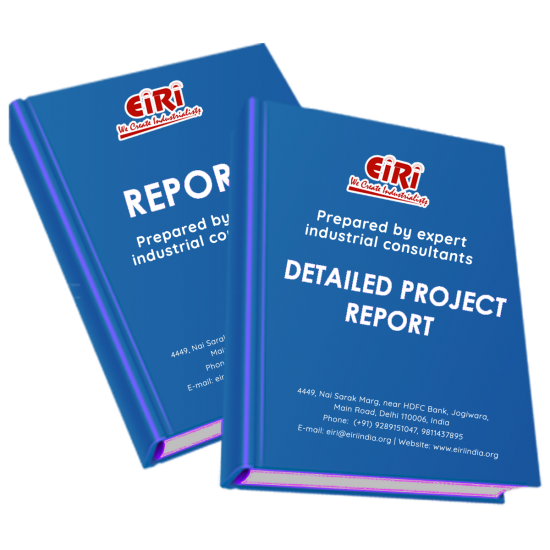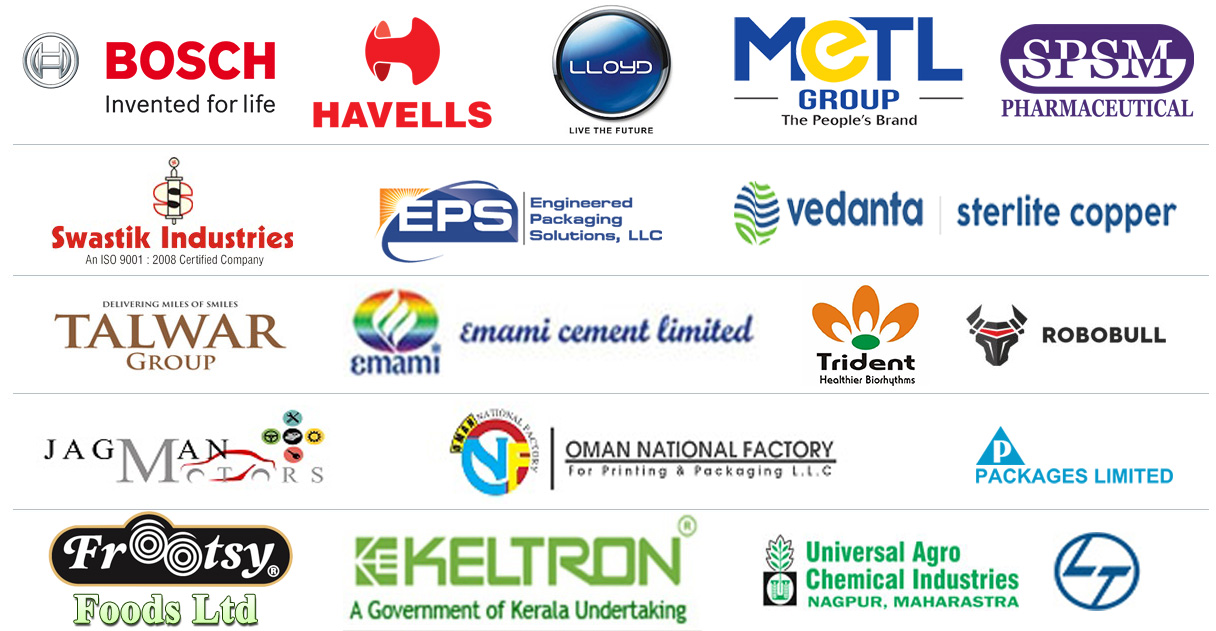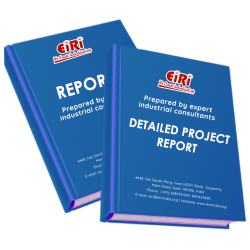Tennis Ball for Lawn Tennis (Capacity: 3000 Numbers per day)

- More than 40 years of experience
- Managed by expert industrial consultants
- ISO 9001-2015 Certified
- Registered under MSME, UAM No: DL01E0012000
- 24/5 Research Support
Get your quesries resolved from an industry expert. Ask your queries before report or book purchase. - Custom Research Service
Speak to the our consultant to design an exclusive study to serve your research needs. - Quality Assurance
All reports are prepared by highly qualified consultants & verified by a panel of experts. - Information Security
Your personal & confidential information is safe & secure.
TENNIS BALL FOR LAWN TENNIS
[EIRI/EDPR/4539] J.C.: 2756XL
INTRODUCTION
A tennis ball is a ball designed for the sport of tennis. Tennis balls are fluorescent yellow in organised competitions, but in recreational play can be virtually any color. Tennis balls are covered in a fibrous felt which modifies their aerodynamic properties, and each has a white curvilinear oval covering it.
Modern tennis balls must conform to certain criteria for size, weight, deformation, and bounce criteria to be approved for regulation play. The International Tennis Federation (ITF) defines the official diameter as 6.54–6.86 cm (2.57–2.70 inches). Balls must have masses in the range 56.0–59.4g (1.98–2.10 ounces). Yellow and white are the only colors approved by the ITF, and most balls produced are a fluorescent yellow known as "optic yellow".
Tennis balls are filled with air and are surfaced by a uniform felt-covered rubber compound. The felt delays flow separation in the boundary layer which reduces aerodynamic drag and gives the ball better flight properties. Often the balls will have a number on them in addition to the brand name. This helps distinguish one set of balls from another of the same brand on an adjacent court.
Tennis balls begin to lose their bounce as soon as the tennis ball can is opened. They can be tested to determine their bounce. Modern regulation tennis balls are kept under pressure (approximately two atmospheres) until initially used; balls intended for use at high altitudes have a lower initial pressure, and inexpensive practice balls are made without internal pressurization. A ball is tested for bounce by dropping it from a height of 254cm (100 inches) onto concrete; a bounce between 135 and 147cm (53 and 58 inches) is acceptable if taking place at sea-level and 20°C (68°F) with relative humidity of 60%; high-altitude balls have different characteristics when tested at sea level.
The ITF's "Play and Stay" campaign aims to increase tennis participation worldwide, by improving the way starter players are introduced to the game. The ITF recommends a progression that focuses on a range of slower balls and smaller court sizes to introduce the game effectively to both adults and children. The slowest balls, marked with red, or using half red felt, are oversized and unpressurized, or made from foam rubber. The next, in orange, are unpressurized normal sized balls. The last, with green, are half pressured normal sized.
COST ESTIMATION
Plant Capacity 3000 Nos./Day
Land & Building (1000 sq.mt.) Rs. 1.55 Cr
Plant & Machinery Rs. 65 Lac
Working Capital for 1 Month Rs. 28 Lac
Total Capital Investment Rs. 2.62 Cr
Rate of Return 24%
Break Even Point 70%
CONTENTS
INTRODUCTION
SPORTS GOODS MANUFACTURING INDUSTRY IN INDIA
MAJOR ESTABLISHMENTS ARE AS FOLLOWS:
CURRENT SCENARIO OF SPORTS GOOD INDUSTRY IN INDIA
EXPORT DESTINATIONS
GOVERNMENT INITIATIVES
MARKET DEVELOPMENT ASSISTANCE (MDA) SCHEME
MARKET ACCESS INITIATIVE (MAI)
TYPES OF TENNIS BALL
1. REGULAR DUTY BALL:
2. EXTRA DUTY BALL:
3. GRASS DUTY BALL:
4. HIGH ALTITUDE DUTY BALL:
SEQUENCES IN TENNIS BALL MANUFACTURE
STAGE 1: PRODUCTION OF SOLUTIONS
STAGE 2: FORMULATIONS
STAGE 3: EXTRUDE
STAGE 4: FORM
STAGE 5: EDGE BUFF
STAGE 6: CURE AND INFLATE
STAGE 7: CORE SOLUTION
STAGE 8: FABRIC COVER
STAGE 9: MOULDING
STAGE 10: STEAMING
STAGE 11: FINISHING
KEY STEPS IN TENNIS BALL MANUFACTURE
STEP TWO
STEP THREE
STEP FOUR
STEP FIVE
STEP SIX
STEP SEVEN
STEP EIGHT
STEP NINE
STEP TEN
END OF THE LINE
TENNIS BALL MATERIALS & MANUFACTURE
MANUFACTURING PROCESS
CLOTH
PROPERTIES OF CLOTH
RUBBER
EXAMPLE RUBBER FORMULATIONS FOR A PRESSURISED AND PRESSURELESS BALL CORE COMPOUND (IN PER HUNDRED RUBBERS, PHR)
PROPERTIES OF RUBBER
ELASTIC PROPERTIES
FORMULATION & TENNIS BALL CORE
TENNIS BALL REGULATIONS & TEST STANDARDS
BALL IMPACT MECHANICS
COEFFICIENT OF RESTITUTION (COR)
CONTACT TIME
CONTACT AREA
CONTACT FORCE
DEFORMATION
OBLIQUE IMPACTS
BALL DEGRADATION
FELT
MASS LOSS
KEY POINTS FOR QC INSPECTION OF TENNIS BALLS
REMOVING "SET"
ACCLIMATIZATION AND DECOMPRESSION
DEFORMATION TESTING
REBOUND TESTING
COLOR OBSERVATION
PRINCIPLES OF PLANT LAYOUT
STORAGE LAYOUT:
EQUIPMENT LAYOUT:
SAFETY:
PLANT EXPANSION:
FLOOR SPACE:
UTILITIES SERVICING:
BUILDING:
MATERIAL-HANDLING EQUIPMENT:
RAILROADS AND ROADS:
MAJOR PROVISIONS IN ROAD PLANNING FOR MULTIPURPOSE SERVICE ARE:
PLANT LOCATION FACTORS
PRIMARY FACTORS
1. RAW-MATERIAL SUPPLY:
2. MARKETS:
3. POWER AND FUEL SUPPLY:
4. WATER SUPPLY:
5. CLIMATE:
SPECIFIC FACTORS
6. TRANSPORTATION:
A. AVAILABILITY OF VARIOUS SERVICES AND PROJECTED RATES
7. WASTE DISPOSAL:
8. LABOR:
9. REGULATORY LAWS:
10. TAXES:
11. SITE CHARACTERISTICS:
12. COMMUNITY FACTORS:
13. VULNERABILITY TO WARTIME ATTACK:
14. FLOOD AND FIRE CONTROL:
EXPLANATION OF TERMS USED IN THE PROJECT REPORT
1. DEPRECIATION:
2. FIXED ASSETS:
3. WORKING CAPITAL:
4. BREAK-EVEN POINT:
5. OTHER FIXED EXPENSES:
6. MARGIN MONEY:
7. TOTAL LOAD:
8. LAND AREA/MAN POWER RATIO:
PROJECT IMPLEMENTATION SCHEDULES
INTRODUCTION
PROJECT HANDLING
PROJECT SCHEDULING
PROJECT CONSTRUCTION SCHEDULE
TIME SCHEDULE
ADDRESSES OF RAW MATERIAL SUPPLIERS FOR LOWN TENNIS BALL ADDRESSES OF PLANT AND MACHINERY SUPPLIERS
APPENDIX – A:
01. PLANT ECONOMICS
02. LAND & BUILDING
03. PLANT AND MACHINERY
04. OTHER FIXED ASSESTS
05. FIXED CAPITAL
06. RAW MATERIAL
07. SALARY AND WAGES
08. UTILITIES AND OVERHEADS
09. TOTAL WORKING CAPITAL
10. TOTAL CAPITAL INVESTMENT
11. COST OF PRODUCTION
12. TURN OVER/ANNUM
13. BREAK EVEN POINT
14. RESOURCES FOR FINANCE
15. INSTALMENT PAYABLE IN 5 YEARS
16. DEPRECIATION CHART FOR 5 YEARS
17. PROFIT ANALYSIS FOR 5 YEARS
18. PROJECTED BALANCE SHEET FOR (5 YEARS)
How to Make Project Report?
Detailed Project Report (DPR) includes Present Market Position and Expected Future Demand, Technology, Manufacturing Process, Investment Opportunity, Plant Economics and Project Financials. comprehensive analysis from industry covering detailed reporting and evaluates the position of the industry by providing insights to the SWOT analysis of the industry.
Each report include Plant Capacity, requirement of Land & Building, Plant & Machinery, Flow Sheet Diagram, Raw Materials detail with suppliers list, Total Capital Investment along with detailed calculation on Rate of Return, Break-Even Analysis and Profitability Analysis. The report also provides a birds eye view of the global industry with details on projected market size and then progresses to evaluate the industry in detail.
We can prepare detailed project report on any industry as per your requirement.
We can also modify the project capacity and project cost as per your requirement. If you are planning to start a business, contact us today.
Detailed Project Report (DPR) gives you access to decisive data such as:
- Market growth drivers
- Factors limiting market growth
- Current market trends
- Market structure
- Key highlights
Overview of key market forces propelling and restraining market growth:
- Up-to-date analyses of market trends and technological improvements
- Pin-point analyses of market competition dynamics to offer you a competitive edge major competitors
- An array of graphics, BEP analysis of major industry segments
- Detailed analyses of industry trends
- A well-defined technological growth with an impact-analysis
- A clear understanding of the competitive landscape and key product segments
Need Customized Project Report?
- Ask for FREE project related details with our consultant/industry expert.
- Share your specific research requirements for customized project report.
- Request for due diligence and consumer centric studies.
- Still haven't found what you're looking for? Speak to our Custom Research Team
About Engineers India Research Institute:
Note: We can also prepare project report on any subject based on your requirement and country. If you need, we can modify the project capacity and project cost based on your requirement.
Our Clients

Our Approach
- Our research reports comprehensively cover Indian markets (can be modified as per your country), present investigation, standpoint and gauge for a time of five years*.
- The market conjectures are produced on the premise of optional research and are cross-accepted through associations with the business players
- We use dependable wellsprings of data and databases. What's more, data from such sources is handled by us and incorporated into the report
Why buy EIRI reports?
- Our project reports include detailed analysis that help to get industry Present Market Position and Expected Future Demand.
- Offer real analysis driving variables for the business and most recent business sector patterns in the business
- This report comprehends the present status of the business by clarifying a complete SWOT examination and investigation of the interest supply circumstance
- Report gives investigation and top to bottom money related correlation of real players/competitors
- The report gives gauges of key parameters which foresees the business execution





















